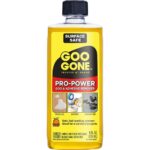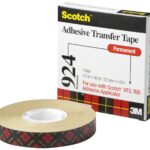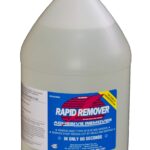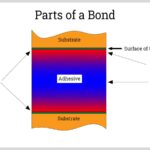Adhesive transfer tape is a type of adhesive tape that features a pressure-sensitive adhesive on one side and a release liner on the other side. It is a versatile tape that is used in a wide range of applications, such as attaching labels, creating bags and covers, and bonding materials together. It is a great choice for both heavy-duty and light-duty projects, as it offers superior adhesion, superior flexibility, and superior strength when compared to traditional glue. Adhesive transfer tape is also known as double-sided tape, as it can be used to permanently bond two materials together. The release liner on the back side of the tape makes it easy to apply, and it can be used on a variety of materials, including paper, plastic, metal, and fabric.
It is also available in a variety of widths and thicknesses, making it suitable for a wide range of applications. Adhesive transfer tape is an excellent solution for projects requiring an invisible bond, such as attaching labels or signs, or when a clean, permanent bond is needed. It is also a great choice for craft projects, as it is easy to use and offers superior hold when compared to other adhesives. Adhesive transfer tape is available in a variety of different adhesives, including pressure-sensitive, water-activated, and heat activated, so it is easy to find the right tape for the job. In addition, the tape is non-toxic, making it safe to use in the home, office, and other environments. Adhesive transfer tape is an excellent choice for a wide range of projects, offering superior adhesion, flexibility, and strength. It is easy to use, available in different adhesives and widths, and is non-toxic, making it a great choice for both professional and home use.
What is adhesive transfer tape used for
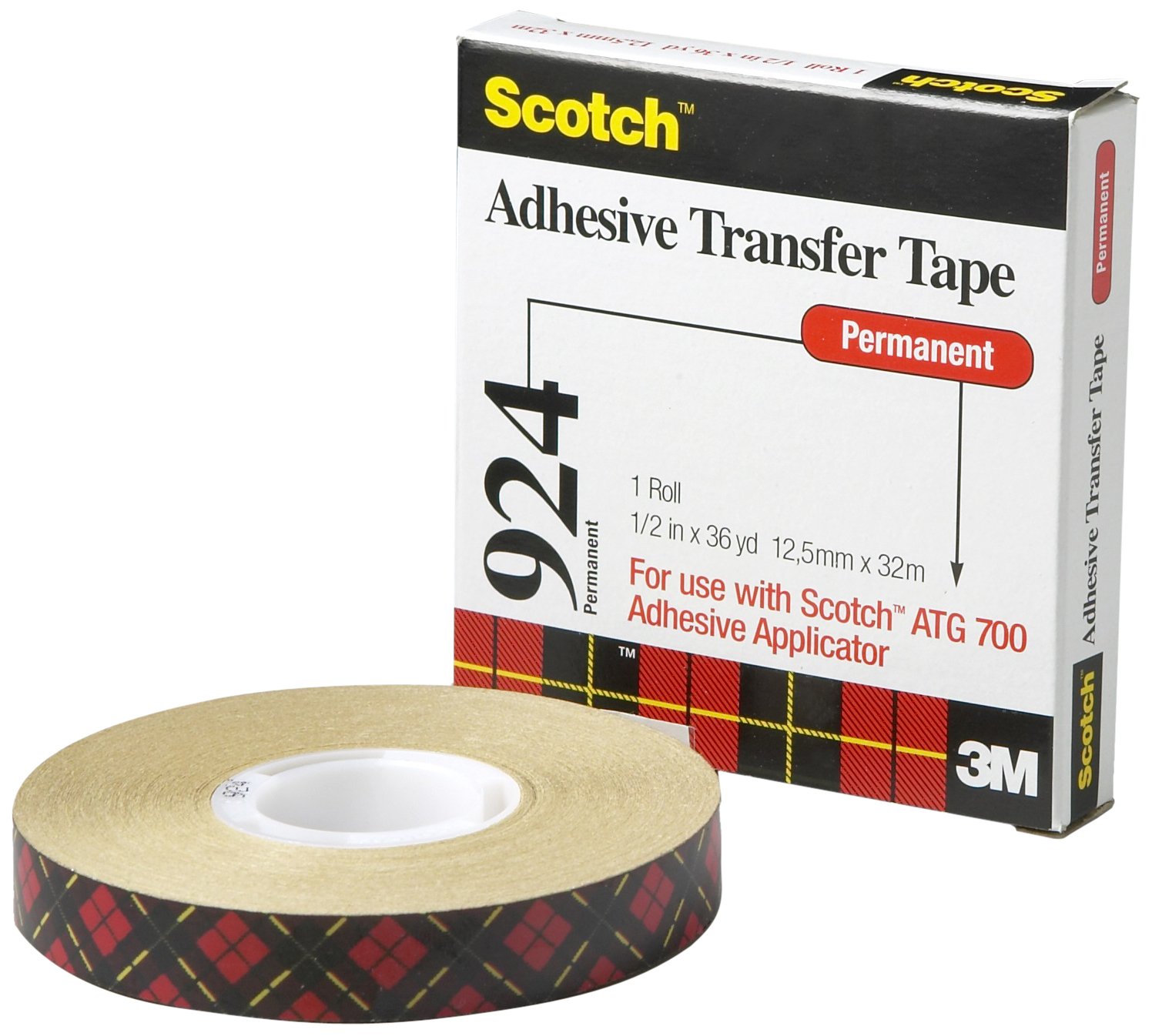
Adhesive transfer tape is made from various substrates, such as plastic film, paper, and fabric, which are coated with adhesive on one side. This adhesive is then bonded to a liner material, such as paper or film, making it easy to transfer the adhesive onto a substrate when pressure is applied. Adhesive transfer tape is often preferred over traditional glues and adhesives for its strength and versatility. The adhesive can be applied quickly and easily to a variety of surfaces, including metal, wood, plastics and fabrics. The adhesive is temperature and water resistant, making it a great choice for indoor and outdoor applications.
Adhesive transfer tape can also be used to repair and join parts together. It is ideal for applications such as automotive repairs, sealing plastic parts, and joining metal pieces together. Adhesive transfer tape is an extremely versatile type of adhesive that can be used in a variety of applications. It is an easy to use and durable method of bonding items together and provides a strong bond that can last for years.
Is transfer tape the same as adhesive tape?
This makes it ideal for many types of projects, such as attaching two surfaces together. The adhesive on each side of the tape is designed to be released from a liner when pressed against the two surfaces being bonded together. This allows for a secure bond between the two surfaces. The adhesive also won’t leave any residue when removed. Adhesive Transfer Tape has many advantages over other types of adhesive tape, such as its easy application and removal.
It is also more durable than other types of tape, as it will not crack or peel away. Additionally, because it is so thin and flexible, it can be used in areas where other types of tape won’t fit. Adhesive Transfer Tape can be used in a variety of applications, including mounting, laminating, and packaging. It is often used to bond thin materials like paper, foil, plastic, and fabric together. It can also be used to attach items to surfaces, such as mounting photographs in an album. Overall, Adhesive Transfer Tape is very different from other types of adhesive tape. It has unique properties that make it ideal for many different applications. It is easy to use, durable, and does not leave any residue when removed.
Do you need transfer tape for all vinyl?
Do you need transfer tape for all vinyl? It depends on the type of vinyl you are working with. For instance, if you are using vinyl stickers or decals, you may not need transfer tape. However, if you are using heavier vinyl, such as vinyl flooring or wall wraps, then you would need to use transfer tape to ensure a secure bond between the materials. Typically, adhesive transfer tape is used when the two materials have different textures or if the material you are adhering needs extra strength. It also eliminates the need for messy glue.
The transfer tape comes in various thicknesses and adhesive levels, so you can choose the best type for your project. Transfer tape is also used when working with an irregular shaped object as it allows you to lift and move the object without it losing its shape. In addition, transfer tape offers a clean and professional finish to your project. Overall, transfer tape is a great tool for anyone using vinyl in their craft projects or manufacturing process. It provides a secure bond between materials, and is easy to apply and remove, making it a great choice for a wide variety of applications.
What are adhesive transfer tapes?
Adhesive transfer tapes, also known as double sided adhesive tapes, are a type of adhesive tape used to bond two surfaces together. They have a thin, flexible backing that is coated with pressure sensitive adhesive on both sides. This makes them ideal for joining, mounting and splicing many different materials, and in a variety of different applications. Adhesive transfer tapes are usually made of materials like vinyl, rubber, or foam, and can be used for a range of purposes. They are often used for mounting, bonding and laminating materials, and can also be used as a sealant or gasket.
They are easier to work with than traditional adhesives, as they don’t require any drying time or curing. Adhesive transfer tapes are also commonly used in the automotive, construction, and electronics industries for mounting and bonding applications. They are also used in the medical, optical and printing industries for splicing and laminating applications. Adhesive transfer tapes are easy to use, and can be cut to the desired shape and size. They can also be used in a variety of temperatures, and can be applied quickly and easily. They are also relatively inexpensive, making them an economical choice for many applications. Overall, adhesive transfer tapes are a versatile, cost-effective solution for bonding and mounting materials, and can be used in a variety of different industrial and commercial applications. They are an essential tool for any business that needs to join, mount or splice materials quickly and easily.
What is the difference between vinyl and transfer tape?
Vinyl and transfer tape are both adhesive tapes, but each has its own unique characteristics. Vinyl is a synthetic material that is stronger and more durable than transfer tape, and it does not stretch or tear easily. It is also often used for outdoor applications, such as signs and banners. On the other hand, transfer tape is a thinner, more flexible material that can easily conform to surfaces, even curved ones. It is often used for more sensitive applications, such as crafting, where precision is important.
The adhesive used in transfer tape is usually more aggressive than that used in vinyl tape, so it sticks better and is better suited for irregular surfaces. It is also easier to remove than vinyl tape, making it ideal for applications that require frequent replacement. The main difference between vinyl and transfer tape is their respective thickness and adhesive strength. Transfer tape is generally thinner and has a more aggressive adhesive, while vinyl tape is thicker and has a less aggressive adhesive. Depending on the application, one may be more suitable than the other.
What can adhesive tape be used for?
This makes it an ideal solution for bonding materials together quickly and securely. Adhesive transfer tape can be used for a variety of tasks, such as mounting, joining and reinforcing. It is ideal for projects where a permanent bond is required, such as signage, displays and product assembly. It can also be used for lightweight materials, such as paper, fabric and felt. Adhesive transfer tape is a versatile and reliable solution for any project.
It is easy to use, with a simple peel-and-stick application for most surfaces. It is suitable for both indoor and outdoor use, making it a great choice for a variety of projects. Adhesive transfer tape provides a strong and permanent bond, making it perfect for many applications. It can be used to attach graphics, labels and signs, as well as mounting mirrors, picture frames and other objects. It is also perfect for creating a clean and professional look when finishing a craft project. Adhesive transfer tape is an invaluable tool for any DIYer or craftsman, with a wide range of uses. It is easy to use, provides a strong bond, and can be used for both indoors and outdoors projects. Whether you are creating signage for a business, or assembling a craft project, adhesive transfer tape is sure to be the right choice for you.
Is adhesive tape permanent?
This makes it useful for many projects that require a strong bond between two parts. It is also useful for creating labels, as it can be easily removed without leaving any residue. Adhesive transfer tape is usually made of plastic or cloth backing with a pressure-sensitive adhesive on one side. It can be found in different sizes and thicknesses, so it can be used for many applications. It is also available in different colors and textures, so it can be used to match any color scheme.
Is adhesive transfer tape permanent? The answer is yes – it is a strong, long-lasting adhesive that will not easily come off once it has been applied. Depending on the type of adhesive used, it can last for many years without any issues. It is important to remember that it is not recommended for use on certain surfaces, due to the risk of damage. Adhesive transfer tape is a great option for many projects, as it is a strong, permanent adhesive that can be used on a variety of surfaces. However, it is important to check the instructions carefully to ensure that it is suitable for the application. This will ensure that it will last for many years, and provide a strong bond between two objects.
What surfaces does tape not stick to?
Although it is a versatile and reliable adhesive, there are certain surfaces it does not adhere to. It does not adhere to surfaces that are uncovered, dirty, or oily. Additionally, surfaces that are too smooth, such as glass or polished metals, will not have enough surface area for the adhesive to properly bond. Furthermore, tape will not stick to surfaces with a low surface energy such as PVC, polyethylene, and Teflon. These materials make it difficult for the adhesive backing to create a strong bond.
Finally, adhesives don’t work on textured surfaces like rough wood, stucco, or other textured surfaces. In conclusion, while adhesive transfer tape is an excellent adhesive for many surfaces, it cannot stick to surfaces that are dirty, oily, too smooth, or have a low surface energy. Additionally, it cannot stick to textured surfaces. Therefore, it’s important to consider the surface before applying adhesive transfer tape.
What is Scotch adhesive transfer tape used for?
Scotch adhesive transfer tape is made from a thin layer of plastic film that is coated with an acrylic pressure-sensitive adhesive. This adhesive is strong enough to hold two surfaces together when pressure is applied. The tape also has a release liner that protects the adhesive from dirt and moisture. Scotch adhesive transfer tape is used for a variety of purposes, including scrapbooking, photo albums, and other paper craft projects. It is also commonly used in manufacturing, especially for affixing labels, graphics, and insulation.
The tape is also used to join plastics and metals in light industrial applications. The tape is easy to use and is often preferred over glue for its strong bond and clean look. Additionally, the tape is available in different widths and lengths, which makes it a great tool for crafts and other projects. Overall, Scotch adhesive transfer tape is a versatile and dependable product that is popular for both art and industrial applications. It is easy to use, highly durable, and can be used to make strong and lasting bonds between different surfaces.
What are some of the strongest brands of adhesive tape?
Some of the strongest brands of adhesive transfer tape include 3M Scotch, Duck, and Permacel. 3M Scotch is a trusted brand that is known for its strong adhesive properties. It is a great choice for applications that require a strong hold and durability. Duck is another popular brand of adhesive transfer tape. It is made with a special adhesive formula that works well on various surfaces, from fabric and plastic to wood and metal.
It is great for heavy-duty projects and provides a secure seal. Permacel is a brand of adhesive transfer tape that provides an excellent bond and leaves no residue behind. It is highly durable and is resistant to moisture, heat, and chemicals. It can be used for a variety of projects, from crafts to industrial applications. If you are looking for a strong adhesive tape, then these brands are a great option. They will provide a secure hold and durability, so you can trust that your project will last.
Which adhesive tape is strongest?
This type of tape is known for its strong hold and lasting adhesive qualities, making it the ideal choice for a variety of applications. So, when it comes to finding the strongest adhesive transfer tape, it’s important to consider the specific application and the environment it will be used in. For example, an industrial adhesive transfer tape might have stronger adhesive qualities and be able to withstand extreme temperatures and harsh conditions. On the other hand, for light-duty applications, such as crafts and general household tasks, an acrylic-based adhesive transfer tape might be the best choice. Acrylic-based adhesive transfer tapes usually offer excellent adhesion and can be repositioned easily.
It’s also important to consider the substrate that the tape will be adhering to. For example, a polyethylene-based adhesive transfer tape might be better suited for application to polyethylene substrates, as it offers superior adhesion. To answer the question of which adhesive transfer tape is strongest, the answer is that it depends on the application and environment. Different types of adhesive transfer tapes offer different levels of strength, so it’s important to consider the specific requirements of the application before choosing the best type of adhesive transfer tape.
Which tape is the strongest duct or packaging tape?
It comes in many forms, but two of the most popular types are duct tape and packaging tape. Duct tape is often the strongest of the two types. It is designed specifically to be highly adhesive while still being able to withstand extreme temperatures and various weather conditions. The adhesive backing is composed of rubber-based material and reinforced with a strong cloth backing, making it an ideal choice for use in a variety of applications. Packaging tape is also known for its strong adhesive properties.
It is usually used to seal cardboard boxes and other packages, as it is able to provide a durable and secure seal. The adhesive on packaging tape is designed to be less aggressive than duct tape, so it can be easily removed from surfaces without leaving a residue. So which tape is the strongest? Both duct tape and packaging tape have similar adhesive properties, but duct tape is generally the stronger of the two. Its reinforced backing and stronger adhesive make it the better choice for applications that require a strong and durable tape.
What is transfer tape do I use?
The tape is generally made of a pressure-sensitive adhesive that is applied to a plastic or paper liner. The liner is then peeled away and the adhesive is transferred to the material being bonded. Transfer tape is often used in the automotive, aerospace, and packaging industries, as well as in arts and crafts. It can be used to bond a wide variety of materials, from paper and cardboard to foam, wood, plastics, and metals. When selecting a transfer tape, it’s important to look for one that can withstand the environmental conditions it will be exposed to, such as temperature and UV exposure.
You also need to consider the type of material you’re bonding, as some tapes are better suited for certain materials than others. To use adhesive transfer tape, you first need to prepare the surface of the materials you’re bonding. This may include cleaning and sanding the surface and ensuring that it is free of dust and grease. Then you can peel away the liner and press the adhesive side of the tape onto the surface. Once the adhesive is firmly in place, you can press the two surfaces together and allow the adhesive to set. Transfer tape is a great alternative to glue and can be used to bond a variety of materials together in a variety of applications. With the right adhesive tape, you can ensure a strong and reliable bond that stands the test of time.
How to use adhesive transfer tape
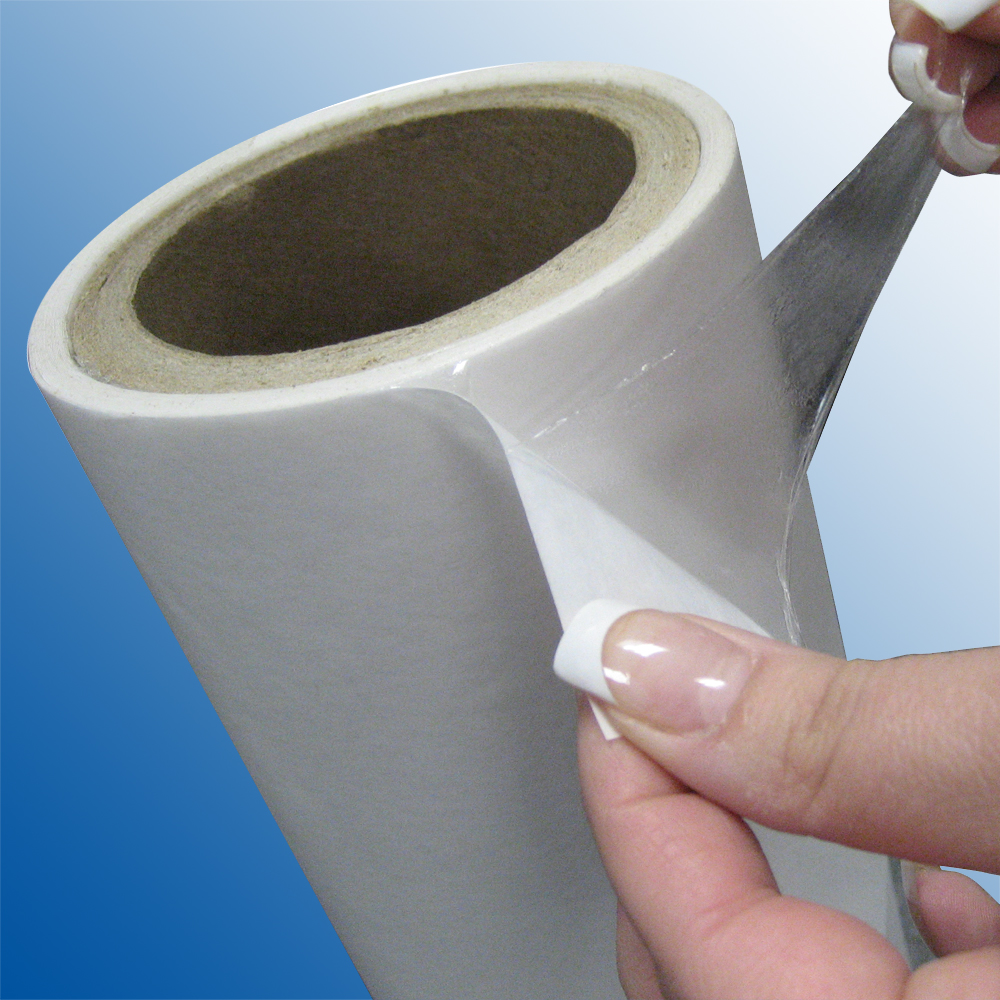
It’s a pressure-sensitive tape with a paper backing, usually with a water-based adhesive. To use it, you need to first peel off the paper backing and then place the adhesive side of the tape onto the item you’re attaching. Once the adhesive makes contact with the item, it will hold it in place. You can use adhesive transfer tape to attach items such as photographs, paper, fabrics, and more. It is an excellent choice for projects that require a strong bond.
It is also a great way to add an extra layer of protection to items that may be subjected to wear and tear. When using adhesive transfer tape, you should make sure that the surface of the item you’re attaching is clean and dry. If there is dirt or oil on the surface, it can affect the strength of the bond. Also, be sure to apply enough pressure to make sure the adhesive makes a full contact with the item. To remove adhesive transfer tape, use a heat gun or hair dryer to loosen the adhesive. Then, use a putty knife or scraper to gently remove the tape. After removing the tape, use rubbing alcohol to remove any remaining adhesive residue. Adhesive transfer tape is a great tool for quickly and securely attaching items. With the right preparation and application techniques, you can use it to make strong and lasting bonds.
How to make a tape transfer?
It’s made of a thin plastic film coated with an adhesive on one side. To make a tape transfer, you’ll need a piece of tape and the object you want to move. First, peel off the backing of the tape so that the adhesive side is exposed. Place the adhesive side of the tape onto the object, making sure that the tape is centered and straight. Then, press firmly to secure the tape to the object.
Once the tape is securely attached, carefully peel the tape away from the object. Make sure to keep the tape straight and not to bend or fold it. When the tape is completely removed from the object, you can place it onto the desired surface. Press the tape firmly onto the surface, making sure it is secure and straight. Then, peel away the backing of the tape, leaving the adhesive side attached to the surface. Finally, press the object onto the tape to firmly attach it to the surface. With adhesive transfer tape, you can quickly and easily move objects from one surface to another without damaging either surface.
Is Flex Tape the strongest tape?
One type of adhesive transfer tape is Flex Tape, which is made with an advanced rubber-based adhesive. This adhesive is designed to be extremely strong, making it an ideal choice for heavy-duty bonding and more difficult applications. Flex Tape is widely believed to be the strongest adhesive tape available. Its rubber-based adhesive provides superior adhesion on a multitude of surfaces, including wood, metal, stone, and even plastic. Its strong adhesive properties make it an ideal choice for jobs that need to be done quickly and securely.
Flex Tape is also waterproof and weatherproof, making it ideal for outdoor applications. It also works well in extreme temperatures, from -50°F to 200°F. This makes it perfect for all kinds of weather-related repairs and projects. Overall, Flex Tape is one of the strongest tapes available for adhesive transfer applications. Its rubber-based adhesive and waterproof, weatherproof, and temperature-resistant properties make it an ideal choice for a wide variety of projects and repairs.
What is the best decal transfer tape?
This type of tape is made of a pressure-sensitive adhesive, which allows it to stick to the surfaces it is applied to. This is a temporary adhesive that can be easily removed without causing any damage to the surface. It is also resistant to water and other elements that can damage the artwork or decal. The best decal transfer tape is one that has a strong adhesive that keeps the decal in place, but is still removable when needed. It should also be easy to apply and free from air bubbles.
The tape should also be long-lasting and durable, so that it can be reused multiple times. It is also important to look for transfer tapes that are designed for specific surfaces. Some tapes are designed for use on windows, walls, or cars, while others are designed for use on fabrics. By choosing the right decal transfer tape, it will ensure the decal will adhere properly to the desired surface. Finally, the best decal transfer tape is one that is affordable, reliable, and capable of delivering great results. It should be made from quality materials and be easy to use. With the right transfer tape, it is possible to have beautiful, professional-looking results every time.
How to use transfer tape with adhesive vinyl

Transfer tape is used to transfer adhesive vinyl to a surface. To use transfer tape with adhesive vinyl, first, prepare your vinyl by cutting the desired shape out of the vinyl sheet. Make sure to leave some extra material around the outside of the shape. This will help to ensure the vinyl adheres to the surface. Next, remove the adhesive backing from the transfer tape.
Carefully lay the transfer tape over the vinyl. Use a squeegee or ruler to burnish the tape onto the vinyl. This will help to ensure a strong bond between the vinyl and the transfer tape. Once the transfer tape is firmly attached to the vinyl, peel away the backing from the vinyl. The vinyl should now be adhered to the transfer tape. Finally, place the transfer tape onto the desired surface. Burnish the tape onto the surface using a squeegee or ruler. Carefully peel away the transfer tape from the surface, leaving the vinyl in place. Your vinyl should now be firmly attached to the desired surface!
Do you use transfer tape with self adhesive vinyl?
It is often used when one material is not compatible with a traditional adhesive. Transfer tape is most often used with self adhesive vinyl to help with perfect placement for projects. It is used in a method known as “transfer tape and vinyl”. This involves placing the adhesive vinyl onto the transfer tape, and then the transfer tape is used to precisely place the vinyl onto the desired surface. Transfer tape can be used to attach other materials to surfaces as well, but it is mainly used with self-adhesive vinyl.
The tape holds the vinyl in place until it can be applied to the surface, and it also provides a smoother application as it helps to reduce any wrinkles or air bubbles. The adhesive transfer tape allows for a perfect application of the vinyl, ensuring that all of the pieces are perfectly aligned. Once the transfer tape is applied and the vinyl is in place, the transfer tape can be carefully removed, leaving the vinyl in its place. In conclusion, transfer tape is an effective solution for projects involving self adhesive vinyl. It provides an easy way to perfectly place the vinyl on any surface and gives a professional finished look to any project.
Why won’t my permanent vinyl stick to my transfer tape?
When working with permanent vinyl and transfer tape, it is important to make sure the adhesive creates a strong bond. If the vinyl does not stick to the transfer tape, it can be difficult to achieve the desired results. There are several potential reasons why your permanent vinyl won’t stick to your transfer tape. First, the surface the vinyl is being applied to may not be clean and free of dirt and grease. Second, the transfer tape may not have been stored properly and the adhesive may have degraded.
Third, the tape may not be the right type for the job. To avoid these issues, make sure the surfaces are clean and dry and that the transfer tape has been stored in a cool, dry place. Additionally, make sure that the transfer tape you use is appropriate for the vinyl you are using. Adhesive transfer tape can be an invaluable tool for many projects. Taking the time to make sure that the vinyl and transfer tape are compatible and that the adhesive is strong can help ensure successful results.
What is the best transfer tape for vinyl?
It’s often used in crafting projects, garment decoration, and other applications where a strong adhesive bond is desired. When it comes to vinyl projects, the best transfer tape is specifically designed for vinyl materials. This type of tape is specially formulated to adhere to vinyl, providing a secure bond without damaging the material or leaving a residue behind. It’s also designed to be easily removed when necessary. Vinyl transfer tape is usually made from a variety of materials, including acrylic and rubber.
The most popular types are usually clear, but some brands may offer other colors and finishes. The thickness of the tape also varies, depending on the type of vinyl being used and the desired results. When choosing a transfer tape for vinyl, it’s important to look for one that is designed specifically for vinyl projects. It should have a strong adhesive backing, the right thickness for the job, and be easy to remove when needed. It’s also important to read the instructions on the package to ensure the tape is compatible with the type of vinyl being used. Overall, the best transfer tape for vinyl projects is one that is specifically designed for that purpose. It should offer a strong bond, be easy to remove, and be the right thickness for the job. Carefully following the instructions on the package to ensure compatibility can help ensure the best results.
Which brand of transfer tape is best?
When it comes to choosing the right brand of transfer tape, there are a few things to consider. First, consider the type of material you are attaching to – some brands specialize in certain materials. Second, consider the temperature levels the tape will be exposed to – some brands are better suited for hotter and colder environments. Third, consider the durability and strength of the adhesive – you want to make sure it will hold up whatever you attach it to. When it comes to brands, 3M Scotch, Avery Dennison, and Tesa Tape are all excellent options.
3M Scotch offers a wide range of transfer tapes that have great adhesion and are suited for many different applications. Avery Dennison is great for high temperatures and offers good adhesion for a range of surfaces. Tesa Tape is a good alternative for outdoor applications or for attaching heavier items. Ultimately, the best brand of transfer tape for you will depend on your specific needs. But if you want a reliable, strong adhesive that’s suitable for a variety of applications, then 3M Scotch, Avery Dennison, or Tesa Tape are all great options.
What is the best transfer tape?
This type of tape is ideal for applications that require a strong bond, precise accuracy, and a clean finished look. The best transfer tape is made of high-quality materials and is designed to provide a long-lasting bond between two surfaces. It should be able to withstand temperature extremes, moisture, and other environmental conditions. The adhesive should be able to provide a strong bond quickly and remain secure for an extended period of time. The backing paper should be selected based on the surface of the material that needs adhering.
This can range from a paper release liner to a plastic backing. The release liner should be easily removable and should not leave a residue behind. Additionally, the adhesive should be able to handle multiple applications without any degradation of performance. The adhesive should be able to resist the elements, remain flexible, and be able to stick to a variety of surfaces. It should not cause any damage or discoloration to the surface of the material. Additionally, the adhesive should be easy to apply and should not be too difficult to remove. Overall, the best transfer tape should be able to provide a strong and secure bond, be easy to apply, and be able to handle a variety of surfaces. It should also be able to resist environmental conditions and remain flexible. By taking all of these factors into account, you can ensure you are selecting the best transfer tape for your needs.
How to transfer your vinyl onto a computer?
To begin, you will need a vinyl record, a computer, and a roll of adhesive transfer tape. Start by placing the adhesive transfer tape on the vinyl record and making sure it is securely attached. You can then connect the record to the computer either through a USB or through an audio cable. Once you have the connection established, you can use a dedicated audio capture software to record the music from the record onto the computer. Once the recording is complete, you can remove the adhesive tape from the record and save the audio file. With this method, you can easily transfer your vinyl collection to your computer, preserving your music for years to come.

